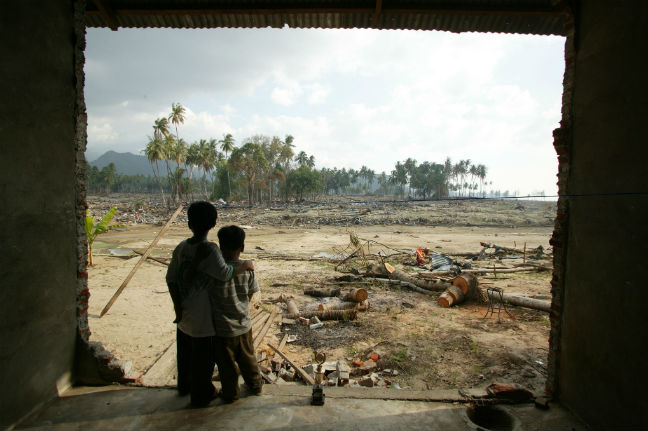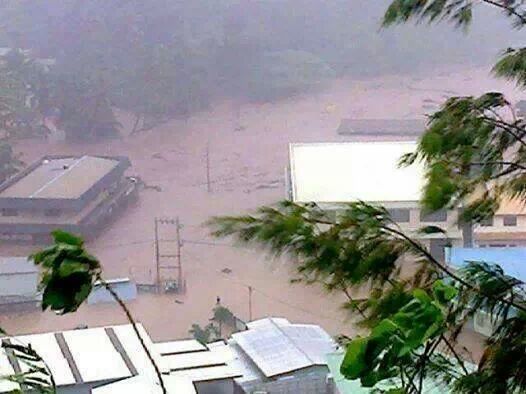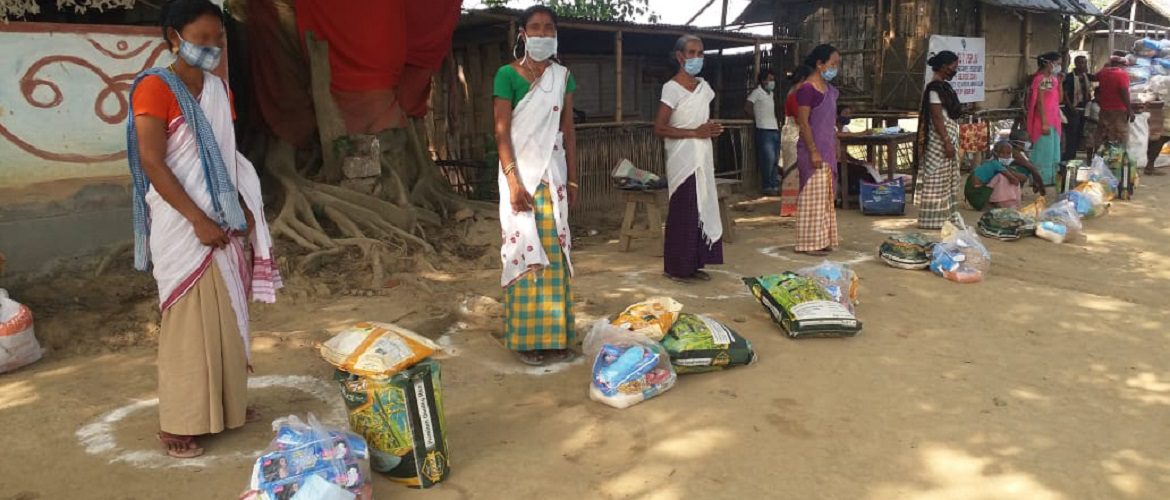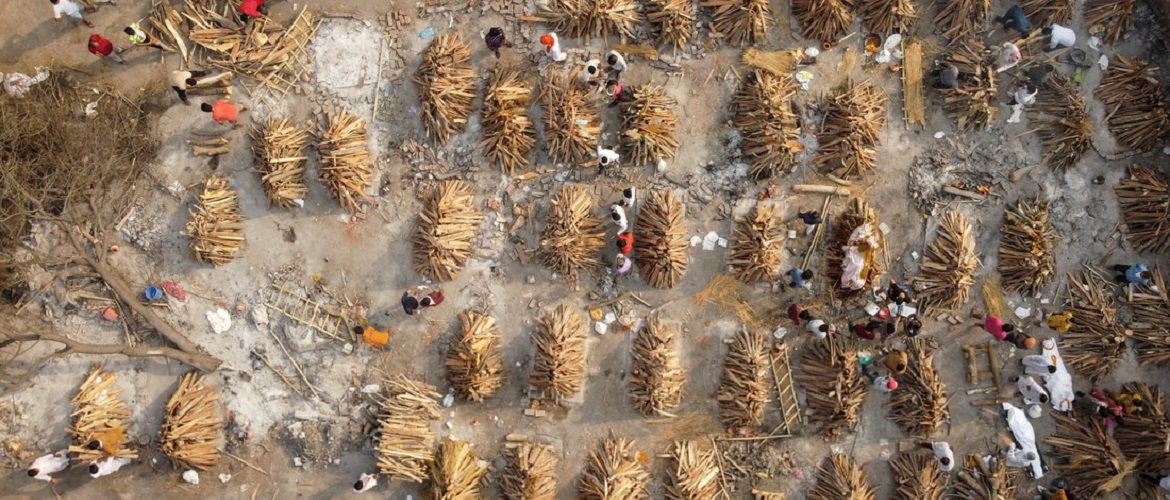By Elena Cornellana, Oxfam media officer.
10 years ago, the Indian Ocean Tsunami shocked the world — 230,000 people lost their lives and 1.7 million were displaced. It remains Oxfam’s largest humanitarian response to date, helping around 2.5 million people between 2004 and 2009. Rahmat and Arie were children when the tsunami devastated Indonesia’s Aceh province. They share their experiences with us today.
“I was only six years old when the tsunami struck. I remember I was ill that morning. We were watching TV – a Japanese cartoon called Doraemon – and then it happened and everything changed forever.” said Rahmat, 16.
“The earthquake sounded like a big ship coming towards us. My father went outside to see what had happened and then we heard a deafening sound, like a huge bomb, coming from the sea.
“My dad saw people running away from the beach, rushing towards their cars or bikes. When we left our house, I was in my underwear and still holding the TV remote control in my hand. We jumped into our car. I remember looking back at the mosque and seeing the water had reached there. All the coconuts had fallen from the trees. We wanted to go to Banda Aceh, but our neighbors said it was worse there, so we changed our minds and went to a mosque on a hill.”
Arie, Rahmat’s cousin, was ten at the time. Like his cousin, he had no idea that an earthquake could cause a tsunami.
“We saw the water heading our way, swamping our fishpond and coming towards us. We knew we had to get to the mosque as quickly as possible, and we made it. We were really lucky,” says Arie.
When the tsunami hit, Arie’s father was working at the cement factory and the family had to run away without knowing if he were alive.
“We found him two days later,” says Arie.
“We were up on the hill and somebody came to check names and mentioned our father’s. My mother heard this and asked them to double check. He was indeed alive. We were so happy. It took us two days to find him because the bridge between the factory and the other side had been damaged.” Arie and his family stayed on the hill for four days until they felt it was safe to descend.
Arie and Rahmat’s stories of survival and resistance in Lampaya – a small fishing community in Indonesia’s Aceh Province – are symbolic of the experiences millions of others had on 26 December 2004.
230,000 people lost their lives and 1.7 million were displaced. In the early days after the tsunami, around five million people needed humanitarian assistance, including food, water and shelter across 14 countries. Indonesia, Sri Lanka, India and Thailand were the hardest hit.
10 years on, the vivid images of the waves and aftermath linger in our minds.
The tsunami was a unique challenge for aid agencies.The task facing the humanitarian sector was the equivalent of rebuilding a city of a million people. It remains Oxfam’s largest humanitarian response to date, with the international organisation and its partners helping around 2.5 million people between 2004 and 2009. What went well and what didn’t in that response was – and still is – a key factor in how aid agencies function in other crises.
“After two months, people from across Indonesia and international agencies came to our village to help us clean away the debris and remove corpses, as they were lying on the streets near our homes,” details Arie.
Managing the unprecedented generosity of the public was also a challenge. Described by the UN as the “most generous and immediately funded emergency relief effort ever,” Oxfam alone received $249m in donations with 92% of that coming from private donors. To deal with this huge amount of money, the Oxfam International Tsunami Fund was set up, which was to ensure funds were allocated in a coordinated and transparent way. This led to the tsunami response becoming a model often referred to as “building back better”.
“Good things are happening now,” Arie reveals. “Aceh is getting better and we think we can have a good life here. The international community heard about Banda Aceh for the first time because of the tsunami, but this has become something positive for us. We are rebuilding our communities.”
Arie and Rahmat’s families were among many that benefited from the international humanitarian response in Lampaya. Oxfam set up new water and sanitation facilities, and built new houses for the displaced.
“I see Rahmat sometimes as his family lives nearby. He comes back once a week and during holidays. When we see each other, we usually go to the fishpond with our friends and feed the cows.”
Arie and Rahmat were only children when the tsunami happened. However, they talk about what they experienced with a great sense of calm. They are both in full-time education now and believe their past experiences have led to a desire to do something for their community.
But the trauma remains.
“When the other earthquake happened (in 2014), I had that big fear again. I wanted to run away because it made me think that a tsunami would strike again. Just run and run, I thought. After the tsunami, there were many aftershocks and each time I was searching for high places to be safe.
“It has been traumatic for me and I will probably continue to have these feelings for the rest of my life,” says Arie.
Arie and Rahmat have proven resilience and they like many others have adapted well and are continuing to successfully live their lives despite the tragedy of the tsunami ten years ago. But there are still too many people living precarious lives in countries affected by ongoing conflict, disasters and unjust situations.
Oxfam will be there for them.
Our International crisis fund ensures that we’re able to respond quickly and efficiently when an emergency occurs around the world.





